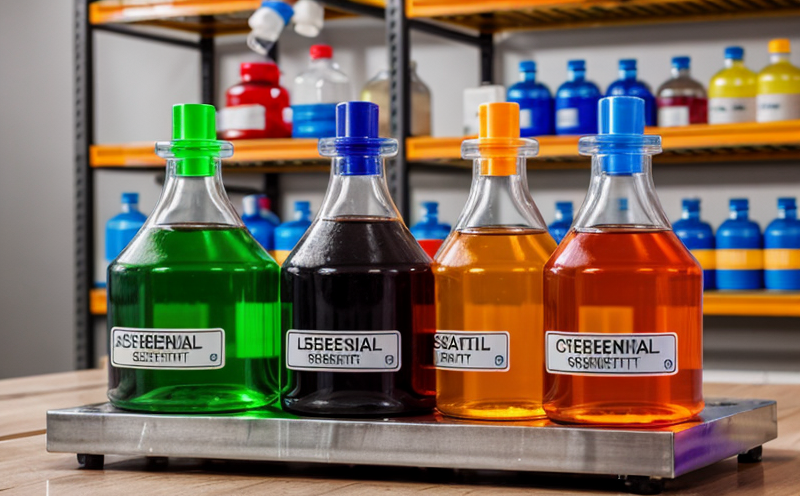PAH (Polycyclic Aromatic Hydrocarbon) Testing in Plastics
The presence of Polycyclic Aromatic Hydrocarbons (PAHs) in plastics is a significant concern due to their potential health and environmental hazards. PAHs are a group of chemical compounds that can be formed during the incomplete combustion of organic materials, including petroleum products, coal, wood, and biomass. These compounds have been linked to various adverse health effects such as cancer, reproductive disorders, and neurological damage.
In consumer products, particularly in plastics used in packaging, toys, and household goods, PAHs can migrate from the material into food or the environment, leading to contamination. As a result, regulatory bodies around the world have implemented stringent limits on the permissible levels of PAHs in these materials. This testing service is designed to help manufacturers ensure compliance with international standards such as EU Regulation 1935/2004 for plastic articles intended to come into contact with food.
The testing process involves a series of steps, starting from sample preparation and extraction using solvents like methanol or dichloromethane. The extracted PAHs are then analyzed using high-performance liquid chromatography (HPLC) coupled with fluorescence detection. This method allows for the precise quantification of individual PAH compounds in the plastic matrix.
The acceptance criteria for this test are based on the maximum allowable limits set by regulatory authorities. For instance, in the EU, the limit is typically 10 mg/kg for total PAHs in food-contact plastics. Understanding and meeting these specific requirements ensures that products can be safely used without causing harm to consumers or the environment.
For quality managers and R&D engineers, this service provides critical data on potential risks associated with PAH contamination. Compliance officers benefit from the assurance that their products meet all necessary regulatory standards, which is essential for avoiding legal issues and maintaining brand reputation. Procurement teams can use the results to evaluate suppliers’ compliance with industry best practices.
Benefits
Conducting PAH testing in plastics offers several key benefits:
- Regulatory Compliance: Ensures adherence to international standards, thereby avoiding penalties and legal disputes.
- Risk Management: Identifies potential health risks early on, allowing for corrective actions before they escalate into serious issues.
- Brand Protection: Maintains the integrity of your brand by ensuring that all products are safe for consumers.
- Consumer Trust: Builds and maintains consumer confidence in your product quality and safety.
The results from this testing can also be used to enhance product design and development, leading to safer and more sustainable materials. By incorporating these insights into future projects, you can create products that not only meet current standards but are also prepared for any future regulations or industry trends.
Industry Applications
| Industry Segment | Specific Application |
|---|---|
| Packaging Industry | Testing of plastic containers, films, and wraps used in food packaging. |
| Toys & Children’s Products | Ensuring that plastics in toys do not contain harmful PAHs which could be ingested by children. |
| Housing & Construction | Evaluating the safety of plastic components used in construction materials such as pipes and insulation. |
| Consumer Electronics | Verifying the safety of plastics used in electronic devices to prevent leaching into the environment. |
In each of these applications, PAH testing is crucial for identifying potential sources of contamination and ensuring that the products are safe for their intended use. The results from this testing can also inform decisions about material selection and manufacturing processes, helping to minimize risks throughout the product lifecycle.
Why Choose This Test
The decision to conduct PAH (Polycyclic Aromatic Hydrocarbon) testing in plastics is paramount for several reasons:
- Health and Safety: Ensures that the products you offer do not pose a risk to human health.
- Compliance with Regulations: Meets international standards and local regulations, avoiding potential legal issues.
- Market Access: Demonstrates your commitment to quality, which can open doors to new markets and customers.
- Brand Reputation: Maintains a positive image by ensuring the safety of your products.
- Innovation: Provides insights into material performance that can drive product development and innovation.
- Risk Mitigation: Identifies potential risks early, allowing for proactive management and mitigation strategies.
This testing service is not just about compliance; it’s about ensuring the safety of your products and the trust of your customers. By choosing this test, you are investing in the long-term success and reputation of your business.





